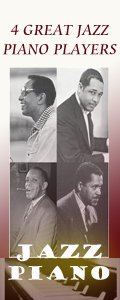A Short History of the Piano

The piano is a musical instrument in its own class. This short history of the piano will explain the evolution of the sound and physical features of the piano.
So let us explore some piano history and see how it was created and how it has evolved over the past three centuries.
Here are my findings after reading different articles and books that give information on piano history.
The piano is a 300 years old musical instrument that was build by an Italian harpsichord builder during the 1700s. Some sources on history of the piano states that Barlolomeo Christofori an Italian harpsichord builder created a new instrument like that of the harpsichord that has dynamic variations.
In other words it was a harpsichord that could be played soft and loud. Upon its revelation in the early 1700s, it was given the name "pianoforte" (gravicembolo col piano e forte). Like the predecessors of the piano it uses a keyboard and has stretched strings on the inside to produce melodic and harmonic sounds of different pitch. However, the piano was not limited in dynamics like the harpsichord and the clavichord.
The main difference between the piano and the harpsichord is the way in which the strings vibrate to make sound. The strings of the harpsichord are plucked by small wedges called plectra.
These wedges in the harpsichord are controlled by one or two keyboards. The piano produces sound by the strings been stricken by a felt-covered hammer which is controlled by the keys of the keyboard.

The picture shows what the hammers look like in a piano. The piano has been through several stages of inventions and re-modelling over two centuries (1700 - 1900).
In the mid 1700 Viennese pianos were created. This type of piano had black naturals and white accidentals. It was totally opposite to what the piano keyboard looks like today.

Here is what the keys of a piano keyboard look like. By the 1800s Sebastian Erard added a unique technology to the piano. His invention allows the keys of the keyboard to have rapid repetition. In this case the hammer was able to hit the strings several times before returning to its original postion.
Hey, if you are beside your piano you can try playing rapid repititions using any key on the keyboard. This is an activity that you can do to find out if each hammer in your piano is working properly. This is a technique that I have used on my piano and was adopted just by studying the history of the piano. However, let us continue. The invention of an iron plate for string tension was another adjustment that was added to the piano. This was added by Alpheus Babcock.
Since the addition of the cast iron plate the piano maintained its look and mechanism from the early 19 century to present. The piano is no doubt one of the most unique Keyboard instrument ever made. The history of the piano has given players and builders a greater appreciation for the instrument and have turned it into a prize possession.
Keyboard instruments have evolved over the past century with digital pianos and synthesizers been created and used in contemporary styles of music.
Related Articles
The Harpsichord - An Ancestor to the Piano
Piano History – The Different Types of Piano that now Exist
Leave history of the piano page and return to home page.
Subscribe to receive free piano lessons
E-zines and other updates!










